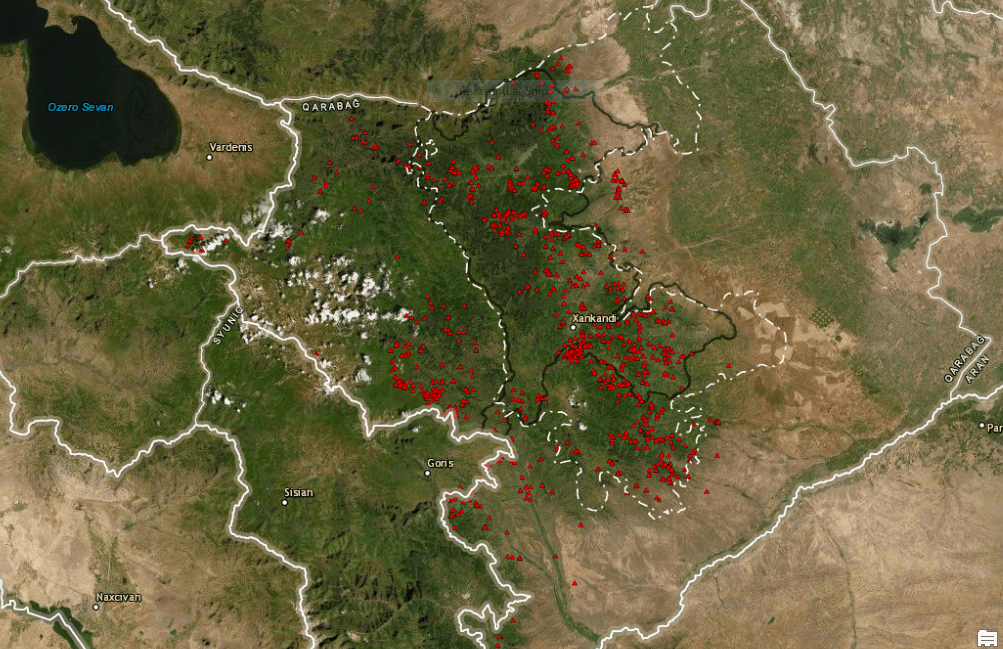

Between September 2022 and April 2023, Caucasus Heritage Watch released two special forensic reports on cultural heritage caught up in the conflict between Armenia and Azerbaijan.
Special Report #1 Silent Erasure: A Satellite Investigation of the Destruction of Armenian Cultural Heritage in Nakhchivan, Azerbaijan documents the erasure of almost the entire Armenian heritage landscape in Azerbaijan’s Nakhchivan province by the Aliyev regime.
CHW Special Report #2 Between the Wars: A Satellite Investigation of the Treatment of Azerbaijani Cultural Heritage in the Unrecognized Republic of Nagorno-Karabakh, 1994-2020 details the varied treatment of Azerbaijani cultural heritage in Nagorno-Karabakh during the decades of Armenian administration.
Together, these reports paint a complete picture of the fate of cultural heritage caught up in the most enduring conflict of the post-Soviet era.

 Caucasus Heritage Watch is
Caucasus Heritage Watch is 
 Here is an opinion piece that Lori Khatchadourian and I just posted on Cornell’s Medium blog entitled “
Here is an opinion piece that Lori Khatchadourian and I just posted on Cornell’s Medium blog entitled “